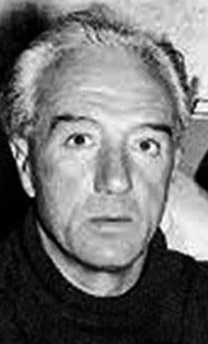Manuel Ángeles Ortiz
Manuel Ángeles Ortiz (Jaén, 1895 – Paris, 1984) is one of the key figures in the process of artistic renewal in Spain throughout the 1920s and up to the Civil War. He constitutes a reference both for artists who travel to Paris and for those who work in the peninsula, mainly because of his collaborations with the magazine Litoral. The curator of the exhibition, Eugenio Carmona, defines this heterogeneous production in proposals and languages under the expression of New Art, based on “the link between Spanish artistic practice with the international Modern Movement”.
Through a hundred works, this retrospective exhibition addresses the production of Ángeles Ortiz beyond the 1930s. In this way, his different artistic tendencies are presented throughout the different stages: his long residence in Paris (1922-1932), his exile in Buenos Aires (1939-1948), his sporadic trips to Granada and his definitive installation in the Gallic capital in 1948.
Since his first stay in Paris, Pablo Picasso’s imprint on his work is deep. His painting shows the same alternation of languages (late Cubism, line drawing and resounding and monumental volumes of classical inspiration, etc.), a symptom of the different approaches to a return to order promulgated by different voices, from Cahiers d’Art to Jean Cocteau or Amédée Ozenfant. On the other hand, and as Carmona points out, the friendship and professional bond with the composer Manuel de Falla affect his work in two ways: the aesthetic appreciation of music and the strengthening of “the relationship between the popular figurative tradition and art modern”.
Considered as an artist of difficult stylistic classification, his work presents —since his independence— a strong experimental will and a complete rejection of abstract painting. Hence, he is attracted to surrealism by “his enigmatic lyricism, not his morbid aberrations of psychotic subjection”, as he himself points out. The same happens in Buenos Aires, his series of woods are not found objects, but pieces worked following his own intuitions. All of this is linked to the tradition of the poetics of the primordial, developed by artists such as Benjamín Palencia, Ángel Ferrant, or Alberto Sánchez, but also by Paul Klee, Jean Arp and Constantin Brancusi.
The persistence of the landscape and the human figure from the 1950s on, coexists with twists that lead him to compositional analysis (La casa de los Dávila, 1957; Geometric Head, 1960; Homenaje al Greco, 1975; Albaicín, 1982). In this way, he creates works in which he combines lyricism and construction and which, without underestimating the role of painting, could place him at the limits of Informalism.

